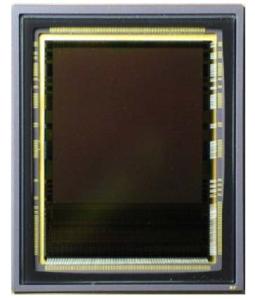Jun 15 2010
Cypress Semiconductor has recently launched a high-speed, high-sensitivity CMOS image sensor for the high-end machine vision segment. This novel 25-megapixel VITA 25K sensor delivers the maximum device throughput in the market. The device has a triggered and pipelined global shutter. Thirty two 10-bit type digital Low Voltage Differential Signaling (LVDS) outputs are provided in the sensor for facilitating image data transfer on a standard industry protocol with low noise and low power.
Every channel operates at 620 Mbps, resulting in a high 53 frames-per-second (fps) frame rate at full resolution for fast readout and undistorted images. The VITA 25K is very useful for applications relating to the high-end machine vision domain like intelligent traffic systems, inspection machines, and biometric inspection like state-of-the-art palm print readers.
 Cypress_VITA-25K
Cypress_VITA-25K
The sensor incorporates a 35-mm optical format with color digital or monochrome output. Its pipelined global shutter functionality facilitates exposure while read-out for reducing motion blur. The sensor can also function in the rolling shutter mode, along with Correlated Double Sampling (CDS) for noise reduction and increasing the dynamic range. Customers will be able to program a maximum of 32 individual interest regions for in-depth viewing of the sensor’s image.
The sensors has built on the 1.3-megapixel VITA 1300 portfolio’s capability and is undergoing sampling tests, followed by manufacturing in late 2010.
Cypress will be show casing its industry-best standard and custom CMOS image sensor solutions, along with these VITA portfolio offerings during the Yokohama, Japan-based 2010 Image Sensing Show on June 9-11, 2010.
The sensor has pixel size of 4.5 µm x 4.5 µm with 5120 x 5120 active pixels. It integrates a programmable gain and offset amplifier for all channels in the 32 LVDS outputs.
Customers will be able to get the sensor’s larger frame rates with sub-sampled or windowed readout modes, and also program the settings of the sensor over an SPI interface.
All read out and internal exposure timings are generated by an on-board sequencer. The sensor permits multiple slopes to be set for increased optical dynamic range, for maintaining a high contrast in an image’s shadowed regions without saturation of the scene’s bright areas.